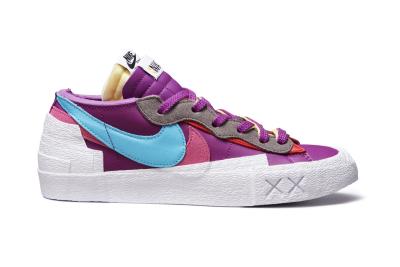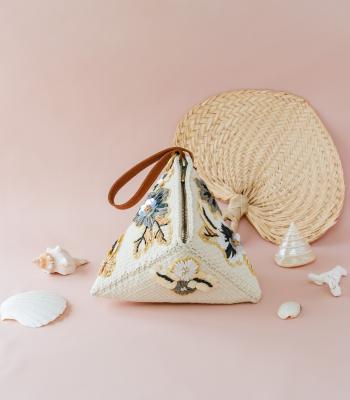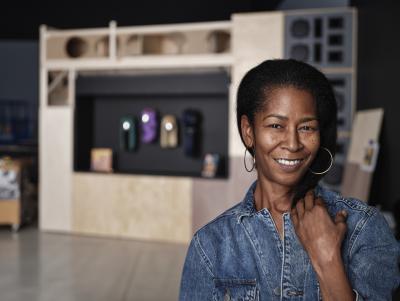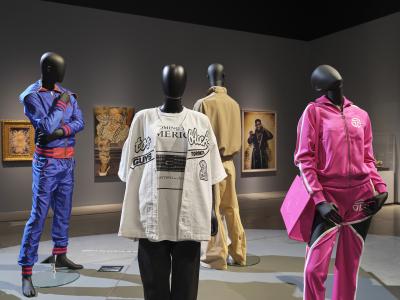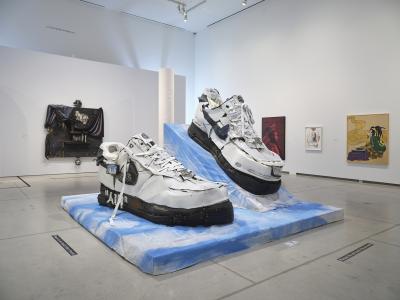How Dionne Alexander’s wigs helped change hip hop
The cosmetologist reflects on working with Lil’ Kim and recreating her most iconic wigs for The Culture: Hip Hop and Contemporary Art in the 21st Century
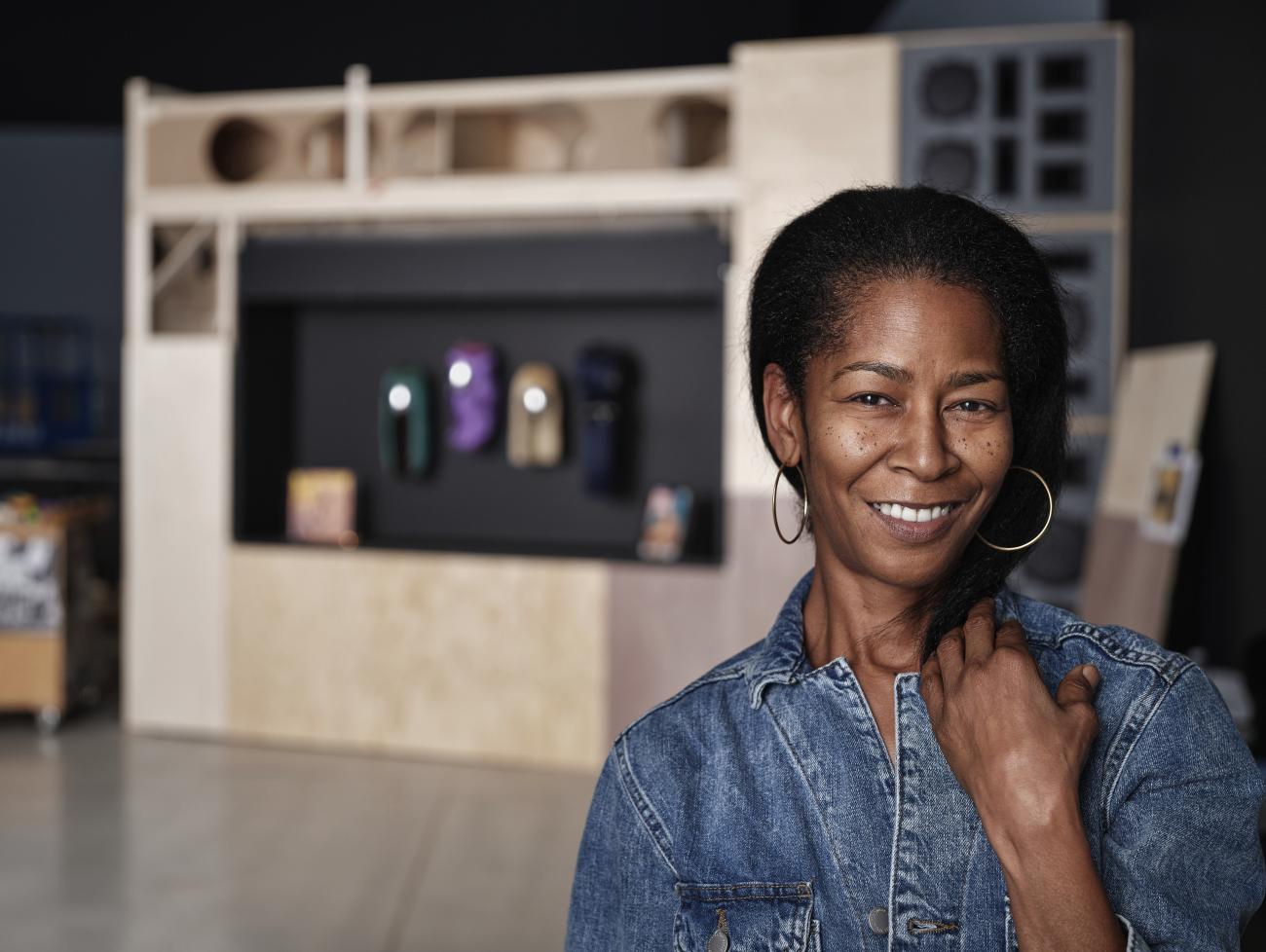
Portrait of Dionne Alexander. Photo: Craig Boyko © AGO.
It’s an outfit — and moment — that lives on in pop culture. Rapper Lil’ Kim arrived at the 1999 MTV VMAs in an iconic purple ensemble: a one-sleeved lilac jumpsuit covered in sequin seashells, a matching seashell pasty on her exposed left breast, and a purple wig to complete her look. The night was only made more memorable when Diana Ross jiggled Lil’ Kim’s breast on stage as she joined the rapper and R&B singer Mary J. Blige to present a VMA.
This wasn’t the first or last Lil’ Kim outfit to make history, and the customized wigs she paired with her outfits were statements in themselves. Dionne Alexander was the cosmetologist and creative mind behind many of the rapper’s iconic hairstyles. Alexander’s magic touch extends beyond just Lil’ Kim — she’s created memorable hairstyles for many beloved women rappers and singers including Mary J. Blige, Lauryn Hill, Missy Elliot, Aretha Franklin, and many more.
Alexander re-created some of her favourite Lil’ Kim hairstyles — including that purple wig — for the exhibition The Culture: Hip Hop and Contemporary Art in the 21st Century, currently on view at the AGO. The Culture puts fashion, wigs, music, and video into dialogue with paintings, sculpture, photography, and multi-media installations to examine hip hop’s global impact on visual culture as an art form.
Before the hair of celebrities came the hair of women from Alexander’s community in Washington, D.C. As Alexander entered kindergarten, her mother began beauty school. This led to Alexander spending her after-school hours in salons.
“I was the last child, so I went to work with her all the time, and the ladies were very glamorous and very beautiful. I fell in love with that,” she reminisced. “I was always around hairdressers. It wasn't so much of me playing with dolls but rather me being around the hairdressers.”
Alexander graduated from high school and jetted off to Europe to model and style hair. Returning to D.C., she followed in her mother’s footsteps, establishing a large clientele and working long hours. Wanting to make a similar income with a smaller roster of clients, Alexander decided to try her hand at hairstyling for movie sets and celebrities.
Her first job was in New York working on the set of the 1992 movie Fly by Night, styling the hair of rapper MC Lyte. Impressed with Alexander’s skill, the rapper asked her to come on tour.
“MC Lyte was already adapting a feminine look, but [when I started working with her] it really got noticed, and everyone noticed me,” Alexander explained. “The women working at labels were a small clique, so the minute a new artist came, they would tell them to go to me.”
This was how Alexander first met singer Mary J. Blige, whom she instantly connected with. Working on the music video set of Mary J. Blige’s song “I Can Love You,” Alexander met and did the hair of Lil’ Kim, who was featured on the song. From that point on, the cosmetologist began working with both women as their careers began to grow exponentially.
The 1999 VMAS was a career-defining night for Alexander, not only because of the attention Lil’ Kim was receiving in her lavender ensemble but also because of the lesser-known fact that she had also done Mary J. Blige’s hair — and for the last time.
“I've never shared this, but that was the day I felt like the break came between Mary and me because I think she was just kind of done with her whole team working on somebody else. There was no bad blood, but it was the moment Mary and I parted.”
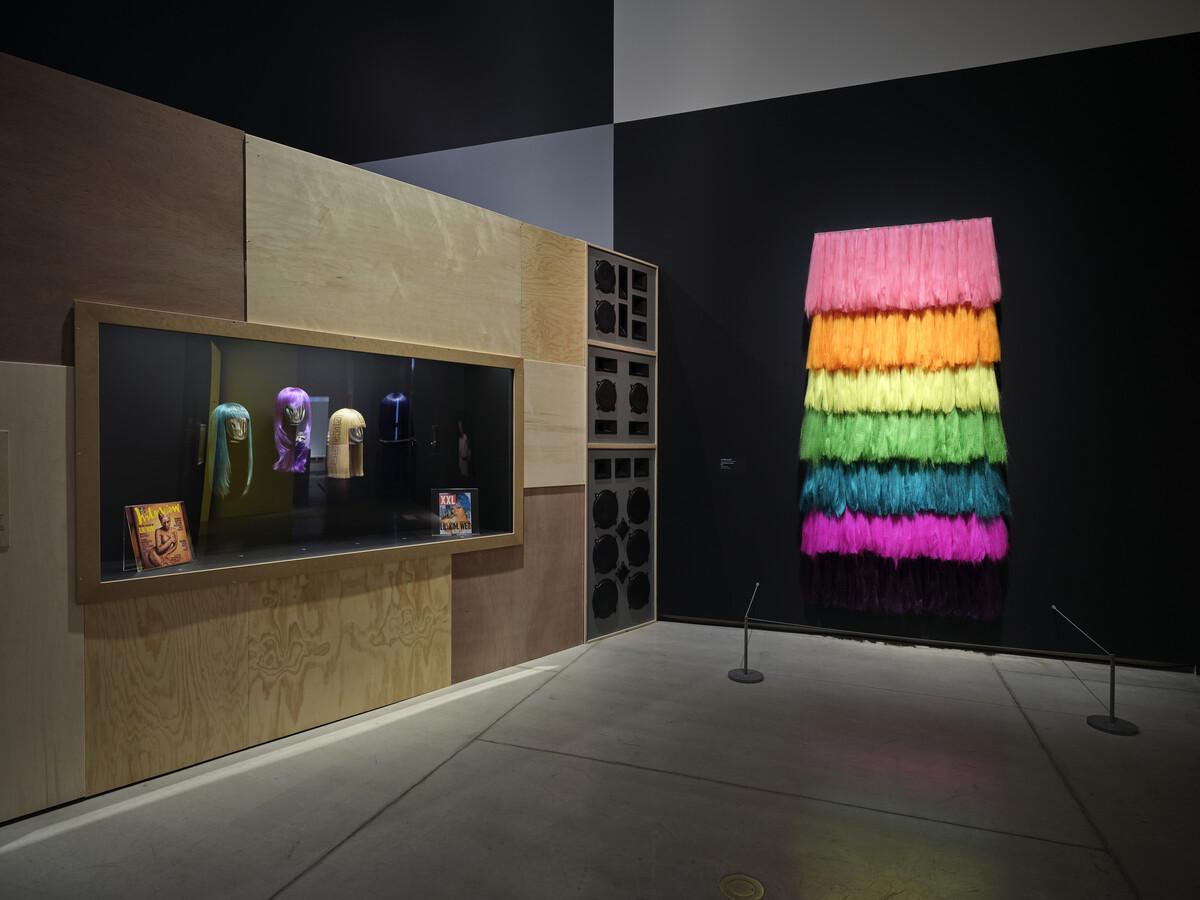
Installation view, The Culture: Hip Hop and Contemporary Art in the 21st Century, December 4, 2024 – April 6, 2025, Art Gallery of Ontario. Works shown: (left) Dionne Alexander, Lil’ Kim wigs; (right) Lauren Halsey, auntie fawn on tha 6. Photo AGO.
Working with Lil’ Kim brought Alexander into a new world. Lil’ Kim is highly regarded for the way she blended designer fashion with hip hop culture. She had close relationships with designers Marc Jacobs and Donatella Versace; and even inspired Giorgio Armani, Karl Lagerfeld, and Betsey Johnson.
Two of the four wigs on view in The Culture are re-creations of Lil’ Kim’s groundbreaking designer logo wigs, which exemplify how hip hop popularized the consumption of brand names. Alexander transformed blonde synthetic wigs to create these looks, adding turquoise and brown layers to the Chanel wig. She then created stencils of the Versace and Chanel logos and used a magic marker to trace them onto the wigs. For the wigs currently on view, Alexander opted for a spray gun to create a more precise outline.
“Kim was the one that opened me up to the fashion world. Mary was great, but I would say she was at the top of the urban game,” Alexander said. “When Kim came, it just allowed me to be more creative, and people recognized my work in the fashion arena.”
Alongside her provocative lyrics, Lil’ Kim’s feminine and bold style, consisting of vibrant wigs, monochromatic outfits, and daring ensembles, changed the rap game, especially for women. Alexander continues to see the rapper’s aesthetic, including her wigs, inspiring new generations of artists.
“What Kim did — not being afraid to merge fashion with hip hop — it changed femininity in hip hop,” she explained. “We were very much B-girl, and she brought the glam and doing that has lasted two decades. When you look at Cardi B or Nicki Minaj, it all stems from what Lil’ Kim did. She defined sexuality in hip hop to me, and when she brought that in, it brought the women up.”
Alexander worked synergistically with stylist Misa Hylton and make-up artist NZINGHA to execute Lil’ Kim’s visions. Hylton and the rapper would approach Alexander with an idea, and she would find a way to create it using what was available at the time: synthetic wigs with bangs. Alexander drew inspiration from both her time in Europe and the hair culture she grew up in.
“I was always into magazines. In Europe, I would always get French and Italian Vogue, and I would gravitate towards European hair fashion because they were always ahead of us,” she recounted. “My mom had an urban salon in a Black neighbourhood, and she was at the top of her game, but going away gave me a vision. I mixed the urban and the European, and that's how I got my signature ideas and looks.”
While there have been advancements in hair styling since the synthetic wigs of the 90s, it took a combination of old and new methods — and Alexander’s creative thinking — to capture the original essence of the hairstyles. While she found herself working with new materials, Alexander also began working with a new perspective on her practice.
“We [cosmetologists] always did hair and fashion shows, but we never used the word ‘art’ in the way I think we could have,” she said. “Even being asked to do this [exhibition], I still didn’t think about it until I came and saw it. Recreating the wigs has opened a door into an area I didn’t know existed. I feel like I’m breaking through into something, and hopefully, this will open doors for different exhibitions with hair.”
Alexander had no clue of the impact she would leave behind after walking away from celebrity styling in the 2000s to focus on her health. Recently receiving a Lifetime Achievement Award from the Beauty Awards Gala, she’s grateful that her creative vision aligned with the artists she worked with and continues to resonate with the hip hop community.
“[Moments such as the purple wig] are so special because I wasn’t the only hairstylist to work with these artists. Every week that they picked my work, they wanted their hair done my way.”
See Alexander’s iconic wigs in person by visiting The Culture: Hip Hop and Contemporary Art in the 21st Century, now on view at the AGO on Level 5. The exhibition is co-curated by Asma Naeem, the Baltimore Museum of Art (BMA)’s Dorothy Wagner Wallis Director; Gamynne Guillotte, the BMA’s Chief Education Officer; Hannah Klemm, Saint Louis Art Museum (SLAM)’s Associate Curator of Modern and Contemporary Art; and Andréa Purnell, SLAM’s Audience Development Manager. The AGO presentation is organized by Julie Crooks, Curator, Arts of Global Africa and the Diaspora, AGO.

